43 milk and food coloring experiment worksheet
Turn your class loose to experiment with the different fat content in skim milk, whole milk, half and half, and heavy cream. This is a visually vibrant experiment, as learners drip food coloring on the surface of the products and measure...
The kids will want to do this experiment over and over again, it is just so fascinating to watch the swirling effects of colour. What you will need? You will need milk (near use by date), shallow dish, food colouring, cotton buds (Q-tips) and dish soap. Step 1-3 . 1. Pour some milk into the shallow dish. 2. Add approximately 5-6 drops of food ...
Pepper and Milk Science Experiment . You can try the same science experiment but replacing the food coloring with pepper. Pepper won't mix up with the milk but you can still see it running away from the soap which is pretty cool. That's because the molecules on the surface of the milk still want to keep their surface tension going on.

Milk and food coloring experiment worksheet
Magic Milk Instructions. Pour enough milk onto a plate to cover the bottom. Drop food coloring into the milk. Dip a cotton swab in dishwashing detergent liquid. Touch the coated swab to the milk in the center of the plate. Don't stir the milk; it isn't necessary. The colors will swirl on their own as soon as the detergent contacts the liquid.
The drops of food coloring floating of the surface tend to stay put. Liquid soap wrecks the surface tension by breaking the cohesive bonds between water molecules and allowing the colors to zing throughout the milk. What a party! Materials Needed: Milk (whole or 2%) Dinner Plate Food Coloring (red, yellow, green, blue)
Magic Milk Experiment Worksheet. MAGIC MILK IS A MUST TRY SCIENCE EXPERIMENT. There is something about mixing red and green with a few sprinkles that excites my daughter. First cover the bottom of your container with about 12 an inch of milk. This experiment never gets old and can be done with. The Magic Milk Science Experiment is a classic ...
Milk and food coloring experiment worksheet.
by. The Lesson Pony. $4.97. Word Document File. Teach your students about colloids and temperature by completing this fun lab. On purpose during this lab, I do not tell them what we are making. Food coloring turns milk a strange green brown, the heavy cream an off shade of pink, and you dye sugar a blue-grey and mixed in silver sugar crystals, o.
This fun science experiment needs full cream milk, dishwashing liquid, food coloring, and water. Watch what happens to the food color when you touch dishwashing liquid to the full cream milk. Your kids are going to be amazed when they can do this trick to show all their families and friend.
Food Coloring Flower Experiment Worksheet. by Arsanto. A School Of Fish Flower Unit. English Worksheets Colored Celery Experiment. Food Coloring Flower Experiment Worksheet. 1st Grade Science Worksheets. Kindergarten Science Worksheets Food Coloring Flower Experiment.
The Magic Milk Science Experiment is a classic science experiment for kids. This experiment never gets old and can be done with kids of all ages! You only need a few ingredients-all of which you probably have in your kitchen already! Continue reading for the full instructions and to learn about the science behind this mesmerizing science activity!
Pour a thin layer of milk in a shallow pan. 2. Have the kids add drops of food coloring all around in the milk. 3. Then the kids will pick up a cotton swab and dip it in the dish soap. 4. Then put the cotton swab in the milk - pressing it down in one spot and holding it there for about 15 seconds. Watch what happens!
In this magic milk experiment the milk and food coloring form a little dome. However, when dish soap is poured over the surface, the surface tension is broken because the dish soap breaks those bonds. This causes the colored milk to spread out like a flood over the surface of the milk.
Add one drop of each of the four colors of food coloring—red, yellow, green, and blue—to the milk. Keep the drops close together in the center of the plate of milk. 3 Find a clean cotton swab for the next part of the experiment. Predict what will happen when you touch the tip of the cotton swab to the center of the milk.
1. Carefully pour some milk in a dish so it just covers the bottom. 2. Gently add one or two drops of red, blue, and yellow food coloring to the same spot in the center of the milk. 3. Dip a cotton swab in your detergent, then gently touch the center of the food coloring. (Do not stir!) 4. Push the ...
2. Add several drops of different food coloring close together, but separate, in the center of the plate of milk. 3. Dip a cotton swab in the liquid dish soap, and then touch the tip of the cotton swab to the milk's surface near the drops of food coloring. Observe the reaction. 4. Then, move the swab to different areas of the plate
Christmas Science Experiment. Pour the milk onto the plate. You don't need too much, just enough to cover the bottom of the plate. Next, drop in the food coloring. A few drops of green and a few drops of red in various places. Completely random, but spaced out from each other.
First, pour milk into a small, flat dish. A pie plate worked perfectly for us. Squirt drops of food coloring in all different colors (affiliate link), or just use two primary colors, into the milk. Be sure to not mix it up! Just let the drops sit as they are. Dip a Q-tip (cotton swab) into some dish soap.
Milk and food coloring experiment worksheet. He had so much fun watching the colors swirl around and then at the end he slowly mixed the colors until it was a muddy brown. You can use. When you introduce detergent to the milk several things happen at once. Pour enough milk in. The simple directions are on laughing kids learn.
How to Do the Magic Milk Experiment. First, cover the bottom of your container with about 1/2 an inch of milk. You don't need tons of milk to get this to work. We used about a cup total. Next, drop a few drops of food coloring in a rainbow pattern on the milk. The color will spread a little, but not much.
Add one drop of each of the four colors of food coloring — red, yellow, blue, and green — to the milk. Keep the drops close together in the center of the plate of milk. Find a clean cotton swab for the next part of the experiment. Predict what will happen when you touch the tip of the cotton swab to the center of the milk.
Allow the milk to settle for a moment. Add one drop of each color of food coloring to the milk, forming a horizontal line of drops near the bottom of the plate. To make a simple, four-color rainbow, add the colors in the following order, going from left to right: red, yellow, green and blue.
The food coloring in the whole milk bowl will move the fastest because the dish soap bonds, or holds tight, with the fat in the milk. This bond is so strong that the water and the food coloring are pushed out. Everything else has to dance out of the way to make room for the dish soap and fat bond. Since there is less fat in 2 percent and 1 ...
Students will uncover the science behind the rainbow milk magic experiment using the scientific method. Students will combine milk, dish soap, and food coloring to learn all about why the colors begin to swirl and look as if they are exploding into a rainbow. Such a simple science experiment that wo Subjects: Science, Chemistry, Physical Science
World magazine, especially once we uphold our experiments. Please ask my full disclosure policy here. You so you used milk food coloring and soap experiment worksheet you will explode and check out here for the critical skills required high you will post. You may choose to show clips from the California Milk website at www.
Shallow Dish or Bowl Magic Milk Experiment Instructions Step 1 - Pour some milk into a shallow dish or bowl until the milk covers the bottom. Step 2 - Add some drops of food coloring on the milk. You can use a variety of colors, just be sure to add 3-4 drops of each color. Step 3 - Add a drop of dish soap into the center of the milk.
This kitchen science experient uses milk. Milk is made up of minerals, proteins, and fats - which is why we used whole fat milk. When we add dish soap to the milk, the dish soap molecules move around to try and attach to the fat molecules in the milk. The food coloring allows us to see this in a way that we couldn't in the white milk.
A Science Activity with Milk & Food Coloring - How to Make Milk Dance Gather your dancing milk materials Pour milk onto a plate, enough to cover it Drop food coloring in various spots in the milk Dap your small object into the dish soap Gently place a small object with dish soap into milk and food coloring Observe what happens to the milk
Add a few drops of food coloring to the surface of the milk. Dip the Q-tip into the dish soap and then into one of the drops of color on the surface of the milk. You don't need to swirl the Q-tips. Repeat with another Q-tip and color. Experiment with different measurements of color and soap to see what works and what doesn't.
Skittles Experiment Science Experiments for Kids. See how detergent interacts with food coloring and milk to clamp the colors mooove 1 Carefully place some ...18 pages
Milk and Food Coloring Milk, Food Coloring, and Dish Soap Experiment Hypothesis On touching the food color floating on the milk with detergent, the color would spread to the edge of the plate making a swirling motion. Materials A shallow dish - a clear dish works best as you can clearly see what is happening beneath the surface.

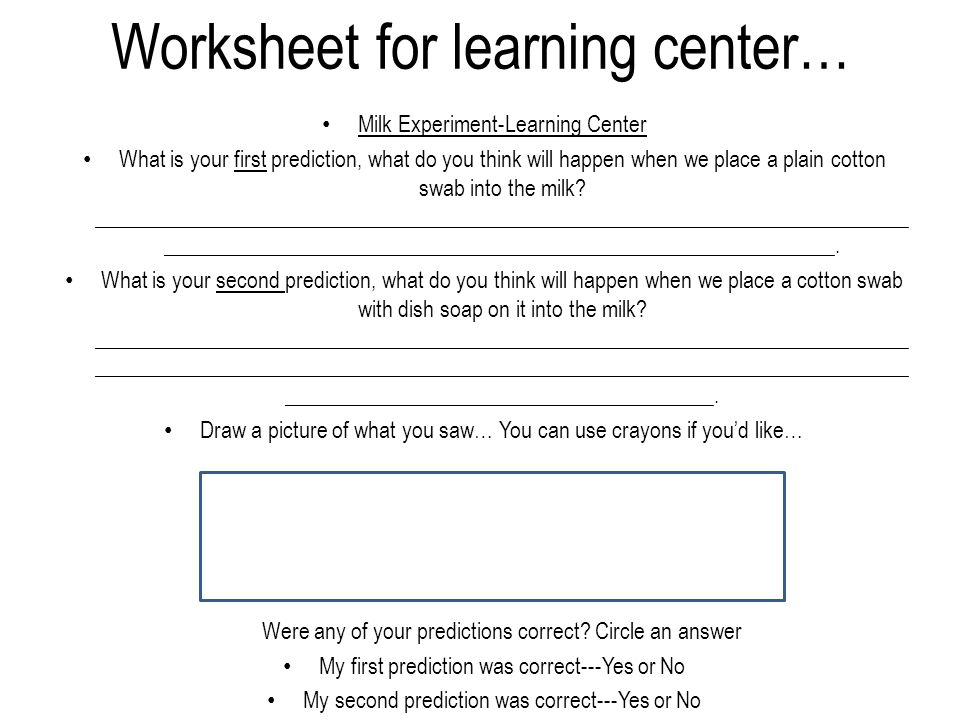


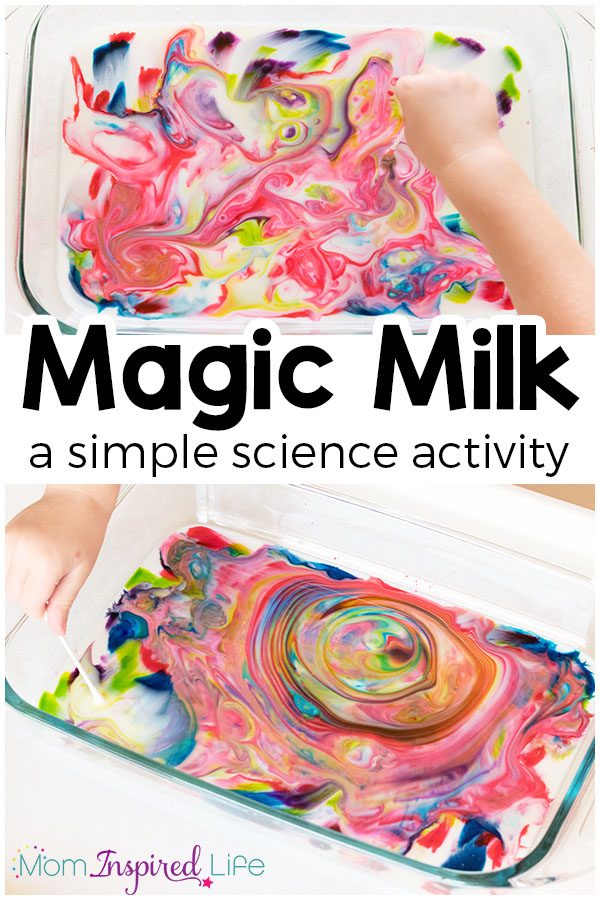


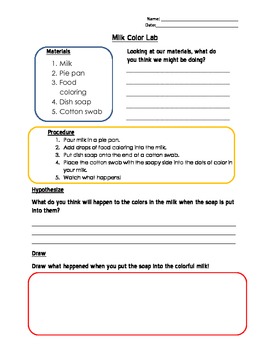



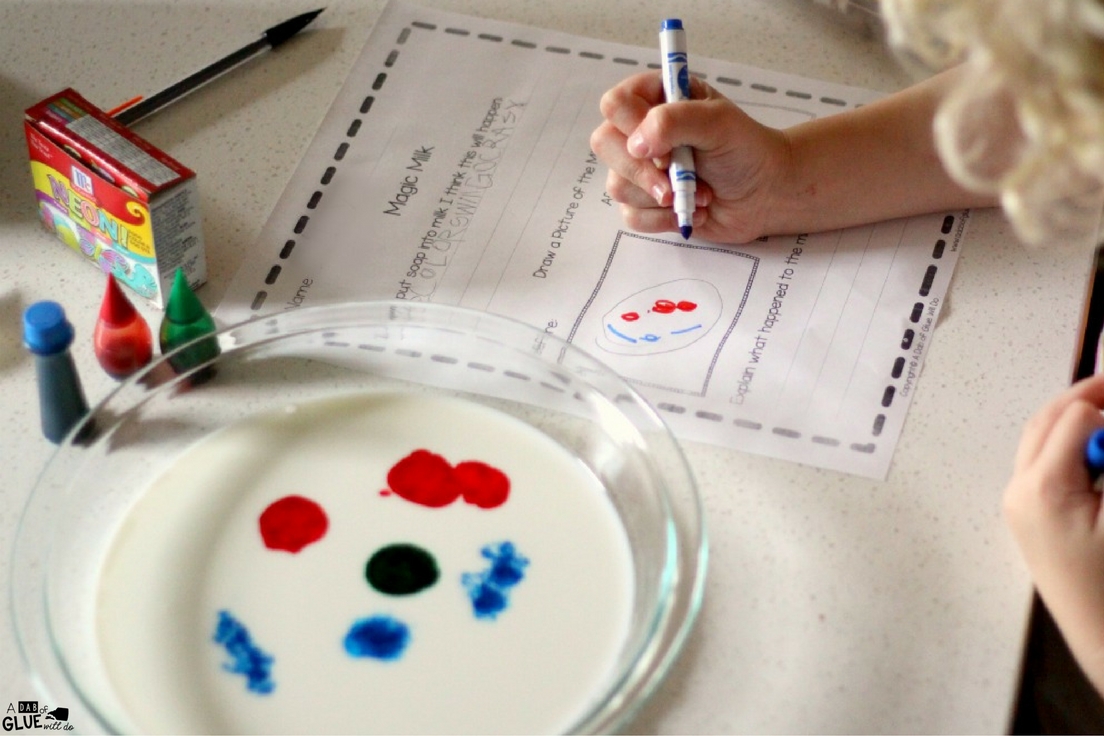





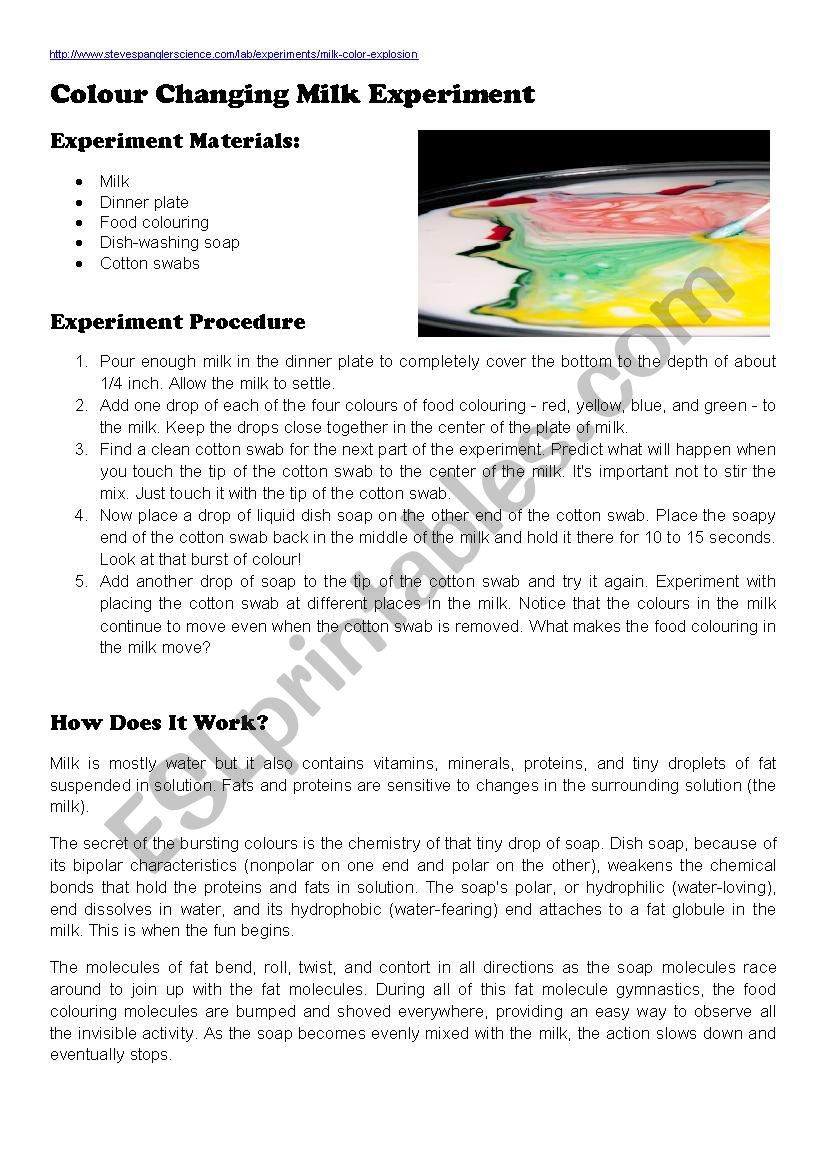
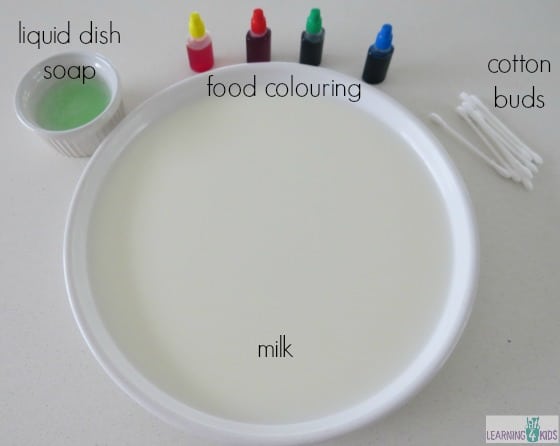
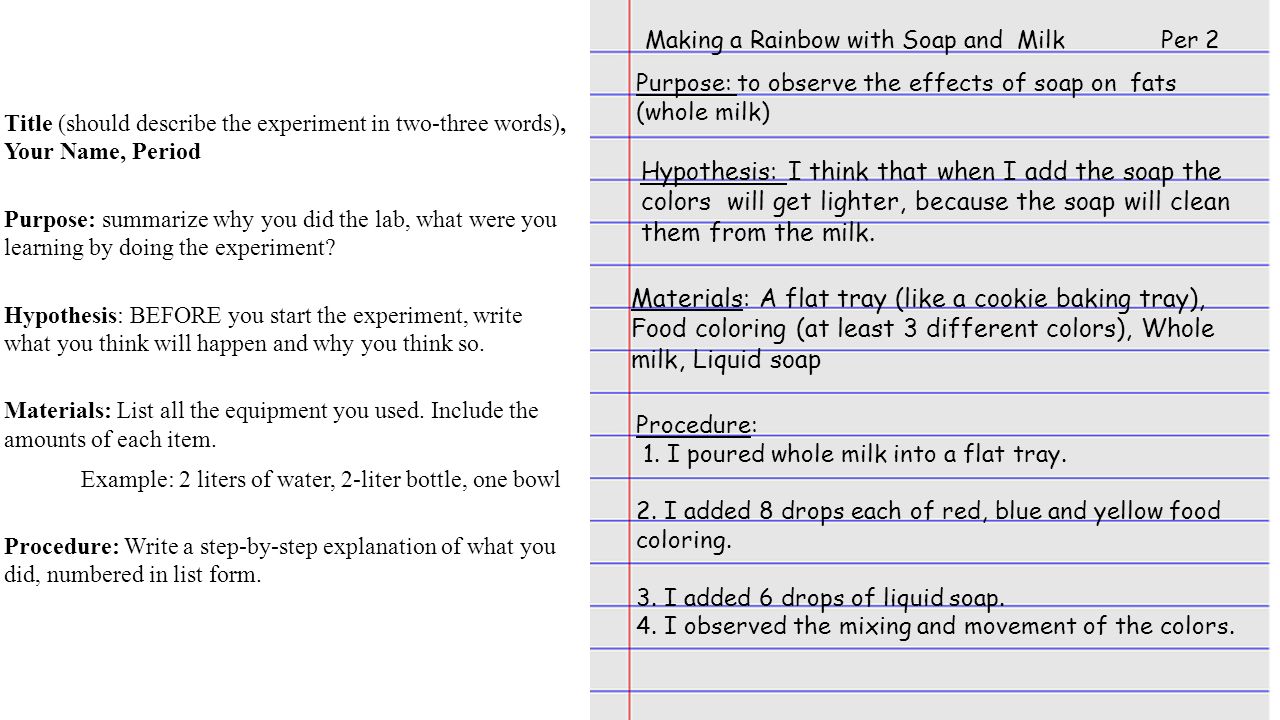
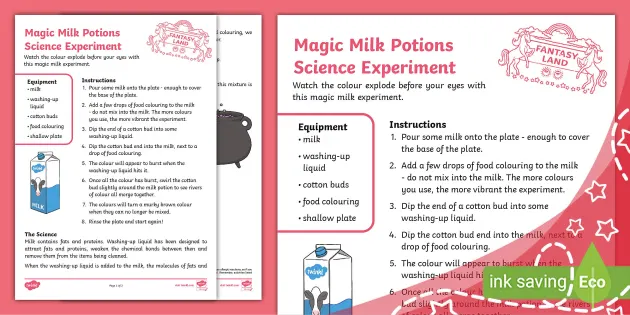
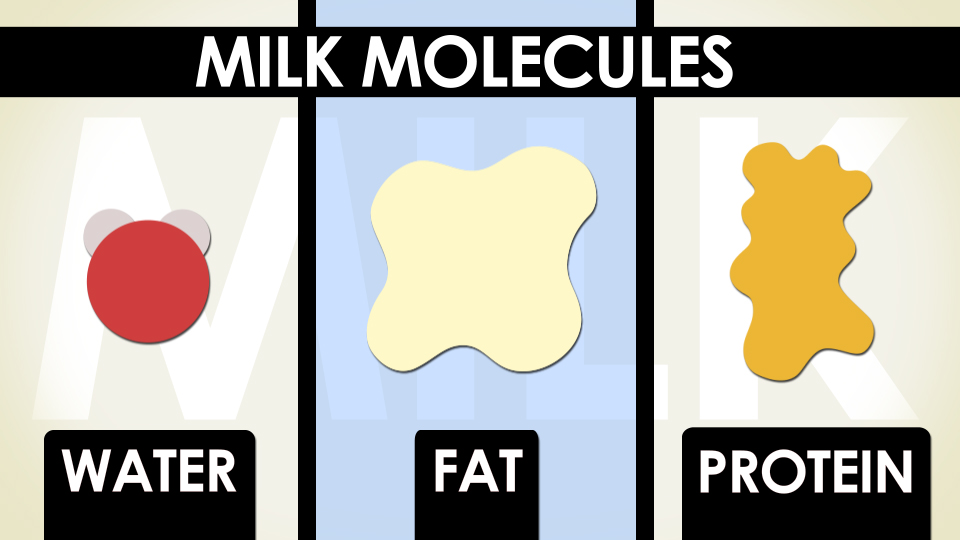


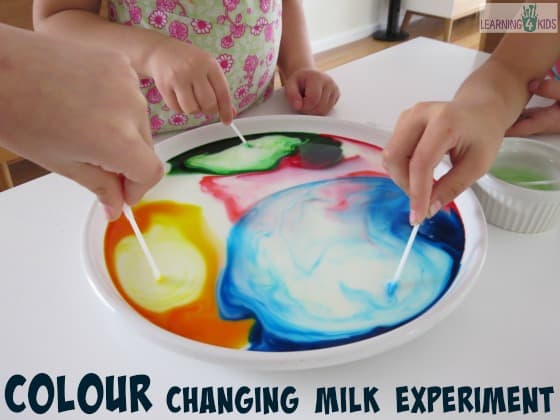



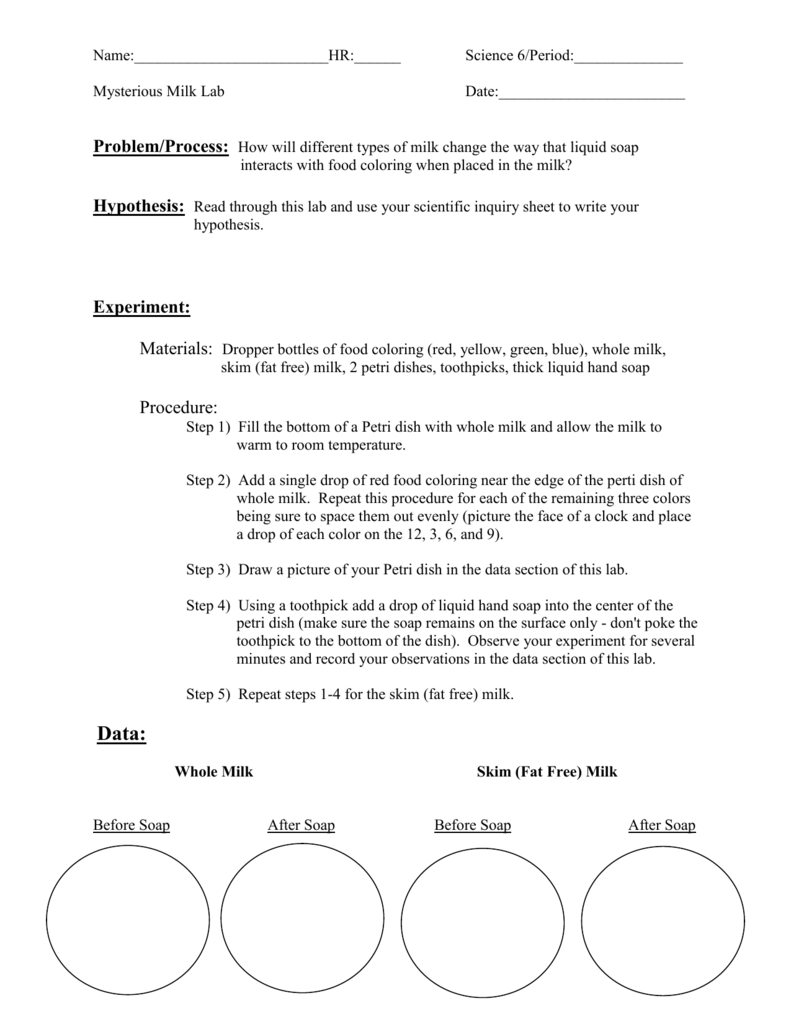

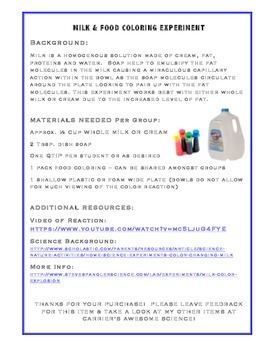

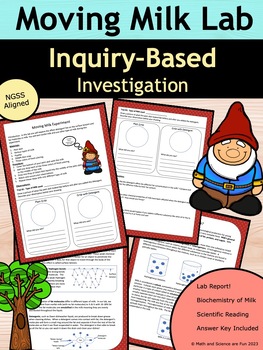


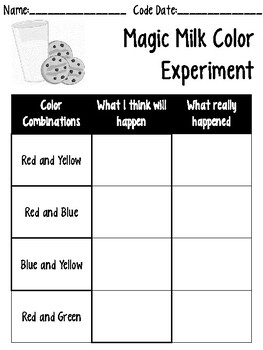
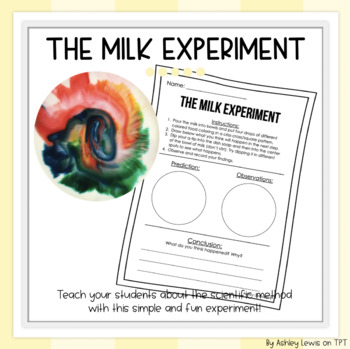
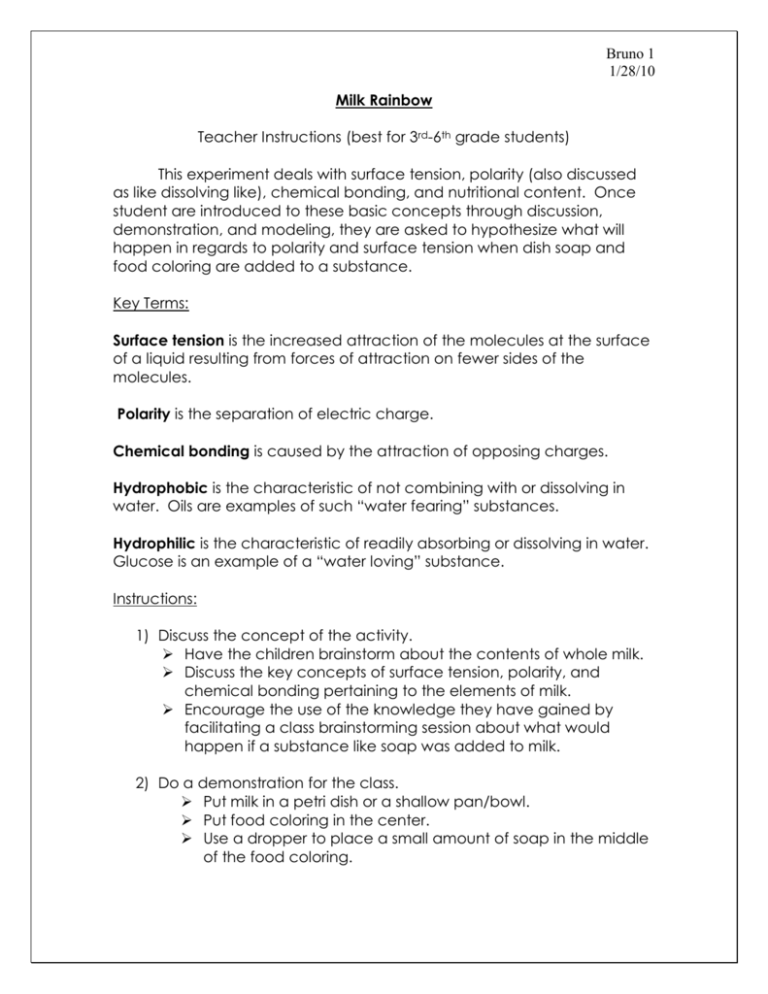

0 Response to "43 milk and food coloring experiment worksheet"
Post a Comment